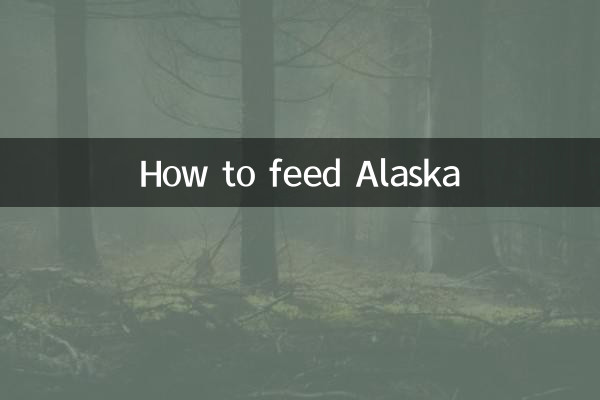How to feed Alaska
The Alaskan Malamute is a large dog breed that is loved for its strong build and lively personality. However, feeding your Alaskan dog requires special attention to its nutritional needs and eating habits. The following is a detailed guide on feeding Alaskan dogs, combining hot topics and hot content in the past 10 days to provide you with scientific feeding suggestions.
1. Dietary needs of Alaskan dogs

The dietary needs of Alaskan dogs vary depending on their size and activity level. The following is a reference table for their daily nutritional requirements:
| Nutritional information | Demand (adult dogs) | Demand (puppies) |
|---|---|---|
| protein | 22%-26% | 28%-32% |
| fat | 12%-16% | 14%-18% |
| carbohydrates | 30%-40% | 25%-35% |
| Calcium | 1.0%-1.5% | 1.2%-1.8% |
| Phosphorus | 0.8%-1.2% | 1.0%-1.5% |
2. Feeding frequency and portion
The feeding frequency of your Alaskan dog should be adjusted based on age and weight. The following are feeding recommendations for different stages:
| age stage | Feeding times per day | Serving size (grams) |
|---|---|---|
| Puppies (2-6 months) | 4-5 times | 100-150 |
| Puppies (6-12 months) | 3 times | 200-250 |
| Adult dogs (over 1 year old) | 2 times | 300-400 |
3. Popular feeding topics and precautions
In the past 10 days, hot topics about Alaskan dog feeding have mainly focused on the following aspects:
1. The controversy over raw meat and bone feeding
Raw bone and meat feeding (BARF) has been a hot topic recently. Supporters believe that raw meat provides more natural nutrition, but opponents point out that it may pose a risk of bacterial infection. It is recommended to choose raw meat and bone sources carefully and seek veterinary advice.
2. Is grain necessary?
Some dog food brands offer grain-free formulas, but whether Alaskan dogs need grains is still controversial. Grains provide carbohydrates and fiber, but some dogs may be allergic to grains. It is recommended to choose based on individual circumstances.
3. Summer feeding adjustments
Alaskan dogs’ appetite may decrease under high temperatures in summer. Popular tips these days include increasing fluid intake, choosing easily digestible foods, and avoiding feeding during hot times.
4. Common feeding misunderstandings
The following are feeding misunderstandings that have been discussed frequently recently and require special attention:
| Misunderstanding | Correct approach |
|---|---|
| Overfeeding snacks | Snacks should not exceed 10% of total daily calories |
| Neglecting dental health | Provide teeth grinding toys or special teeth cleaning food regularly |
| Change dog food at will | Changing dog food requires a gradual transition (7-10 days) |
5. Feeding suggestions during special periods
1. Pregnant female dog
During pregnancy, female dogs need to increase their food intake by 20%-30% and supplement folic acid and calcium. A popular suggestion these days is to feed small amounts over multiple times to avoid overburdening the stomach.
2. Feeding elderly dogs
The metabolism of elderly Alaskan dogs slows down, so they need to choose low-fat and high-fiber food and add joint health ingredients (such as glucosamine). Recent research recommends increasing antioxidant foods such as blueberries.
6. Summary
Feeding Alaskan dogs requires scientific planning of their diet structure and adjustments according to age, season and health status. Recent hot topics remind us of raw meat risks, grain controversies and seasonal feeding changes. By properly combining nutrition and avoiding common misunderstandings, you can ensure the healthy growth of your Alaskan dog.
For further personalized advice, please consult a professional veterinarian or pet nutritionist.

check the details

check the details